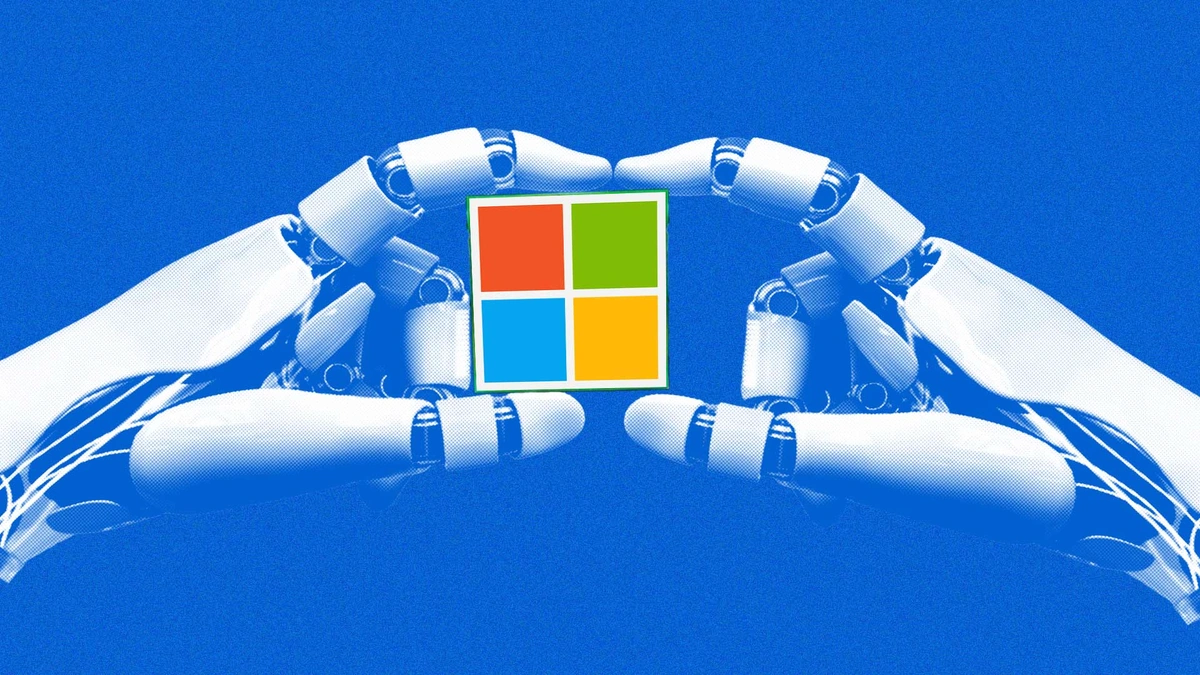Okay, so another AI image generator hits the scene. Big deal, right? We’re drowning in them. But hold on a second – there’s something genuinely different about Microsoft’s MAI-Image-1, and it’s not just the catchy name. This isn’t just about generating pretty pictures; it’s about understanding why this technology is a game-changer and how it will impact everything from your social media feed to, believe it or not, scientific research.
The Speed Factor | Why It Matters

Let’s be honest, most AI image generators are slow. You type in your prompt, and then you wait… and wait… watching a progress bar inch along like it’s stuck in molasses. MAI-Image-1 is different. Its speed is what sets it apart. I initially thought, “Okay, faster generation, who cares?” But then it hit me: the speed unlocks a whole new level of creative experimentation. Need a quick visual for a presentation? Bang. Want to rapidly prototype a design idea? Done.
This isn’t just incremental improvement; it’s a paradigm shift. According to Microsoft’s research paper, MAI-Image-1 leverages novel architectural innovations to achieve these impressive speeds. The faster turnaround allows for quicker iteration, enabling users to refine their ideas in real-time. The result is a more fluid and dynamic creative process.
Realism Redefined | More Than Just Pixels
We’ve all seen those AI-generated images that look… well, fake. Uncanny valley, anyone? MAI-Image-1 seems to be pushing the boundaries of realism. But, before we get too carried away with claims of photorealism, let’s delve deeper. What does ‘realistic’ actually mean in this context? It’s not just about the absence of obvious AI artifacts (those weird blurry edges or distorted faces). It’s about capturing subtle details, understanding lighting, and conveying a sense of depth and texture.
Here’s the thing: realistic images are more impactful. They evoke stronger emotions and create a greater sense of connection. Think about it: a realistic AI-generated advertisement is far more likely to grab your attention than a cartoonish one. This is where realistic photo generation makes all the difference.
The Broader Implications | Beyond the Hype
Okay, so it’s fast and realistic. Great. But what does it mean? This is where things get really interesting. The rise of models like Microsoft’s MAI-Image-1 isn’t just about creating cool pictures; it’s about democratizing visual content creation. Consider, that small businesses can now create professional-looking marketing materials without hiring expensive photographers or designers. Educators can generate custom visuals to enhance their lessons. And researchers can visualize complex data in ways that were previously impossible.
Let me rephrase that for clarity – this is no longer just the purview of tech companies. As AI models become more accessible, they will become integrated into various sectors. The enhanced efficiency in terms of time and resources paves the way for an evolution in fields that rely heavily on visual content creation. Imagine scientific simulations brought to life with a level of realism that allows for deeper understanding, or educational tools that can adapt and create visuals on-demand based on student needs.
Navigating the Ethical Minefield of AI Image Generation
But with great power comes great responsibility, right? AI image models are not without their ethical challenges. The potential for misuse – creating deepfakes, spreading misinformation, generating copyright infringements – is very real. The good news is that there is an increasing awareness around these issues. Developers, including Microsoft, are actively working on safeguards to prevent abuse. These can range from watermarking generated images to developing algorithms that can detect AI-generated content. It’s not a perfect solution, but it’s a step in the right direction.
What fascinates me is the impact on intellectual property. As AI gets better at mimicking artistic styles, what does this mean for artists? How do we protect their work? These questions don’t have easy answers, but they’re essential. And, don’t forget, that this technology has profound implications on digital privacy. As AI becomes better at creating realistic images of people, the risks of identity theft and impersonation increase. Stricter regulations may become necessary to prevent malicious activities.
MAI-Image-1 and the Future of Content Creation
MAI-Image-1 represents a significant step forward in AI-powered image generation. It’s not just about creating pretty pictures; it’s about the speed, the realism, and the potential to democratize visual content creation. But it’s also about the ethical considerations, the need for safeguards, and the importance of responsible development. We’re entering a new era of visual communication, and tools like Microsoft image model are shaping the landscape. It will be fascinating to see where this goes, but, be sure of one thing: the future of content creation is undoubtedly visual and AI-driven.
Check out this article to know more about other breakthrough technologies.
Want to read more about Microsoft and other similar companies? Here is another interesting article about how they are innovating.
FAQ
What exactly is MAI-Image-1?
It’s Microsoft’s latest AI model designed to generate images quickly and with a high degree of realism.
How does it compare to other AI image generators?
MAI-Image-1 stands out primarily for its speed and the quality of realism in its generated images.
Are there any restrictions on using MAI-Image-1?
Microsoft likely has terms of service that govern usage, including restrictions on generating harmful or inappropriate content.
Can I use MAI-Image-1 for commercial purposes?
Check Microsoft’s licensing terms. Generally, using the generated images for commercial purposes might require specific permissions or subscriptions.
What kind of prompts work best with MAI-Image-1?
Detailed, descriptive prompts tend to yield the best results. Experiment with different wording and styles.
Where can I learn more about the technical details?
Look for Microsoft’s research papers or blog posts detailing the model’s architecture and training process.




